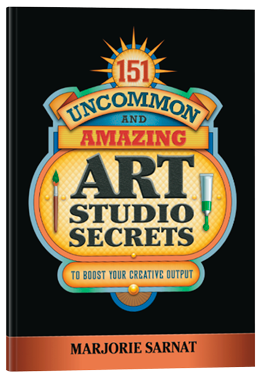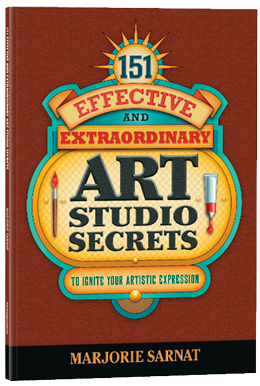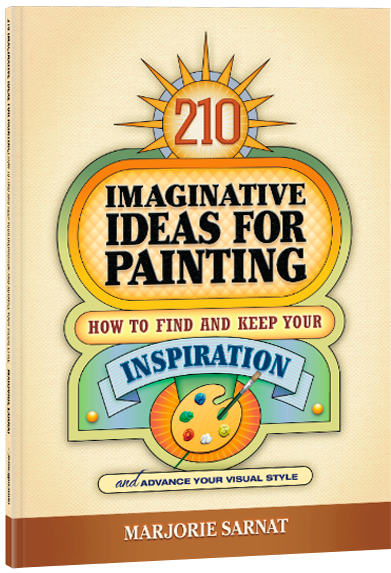The Still Life: Still Lively
 Here's a photograph of a possible still life setup. Old and new items tell a cheerful story. Note the repeated circle shapes, analogous colors, and variety of sizes in the composition.
Here's a photograph of a possible still life setup. Old and new items tell a cheerful story. Note the repeated circle shapes, analogous colors, and variety of sizes in the composition.
A still life lets you express the vitality of painting from life in the comforts of your studio. Forget those boring vases you drew in art school. Set up whatever delights you. Simple shapes and solid colors are easiest to portray, but there are no rules. Some suggestions:
- Home: Kitchen utensils, framed photos, perfume bottles, stuffed animals, even piles of laundry. The phrase, “doing your laundry” has a new meaning to an artist!
- Closet: Handbags of various shapes, a rainbow of scarves, sprawls of hangers, and vintage jewelry;
- Yard: Rocks, muddy boots, rusty tools, and fallen leaves and fruit;
- Found objects: Flea market and thrift store finds, broken or not, offer great shapes and stories;
- Packaging: Cereal boxes, canned goods, board games, and more put words and designs into your statement;
- Art supplies: Paintbrush bouquets, palettes, and paints are colorful props every artist has on hand;
- Unexpected: Add a jolt of interest to a traditional still life with something unexpected, such as a toy robot next to vase of flowers
Composing a Still Life
A pleasing arrangement is the foundation of your artwork. Determine a vantage point (eye level or slightly above eye level works well) then arrange things on a flat surface. Use a piece of cardboard, maybe draped with cloth for a backdrop. For well-defined lights and shadows, use direct light from a window or lamp on your subject.
Play with the placement of things, arranging overlaps and varying heights and sizes. Contrast your darks and lights, including shadows. Fabrics offer pattern accents. Use floral clay or earthquake gel to hold things in place.
Have fun expressing your personal take on the classic still life!
 drawing,
drawing,  painting,
painting,  preparation,
preparation,  still life | in
still life | in  Painting
Painting 









